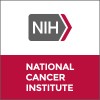
Depsipeptide to Treat Patients With Cutaneous T-Cell Lymphoma and Peripheral T-Cell Lymphoma
Cutaneous T Cell LymphomaPeripheral T Cell LymphomaBackground: NSC630176 is a depsipeptide fermentation product from Chromobacterium violaceum with potent cytotoxic activity against human tumor cell lines and in vivo efficacy against both human tumor xenografts and murine tumors (1-3). NSC 630176, herein referred to as depsipeptide, shows a lack of cross resistance with several commonly used cytotoxic agents such as vincristine, 5-fluorouracil, mitomycin C and cyclophosphamide (2). However, it has been defined as a P-glycoprotein (Pgp) substrate by COMPARE analysis of the National Cancer Institute (NCI) drug screen cytotoxicity profile (4). Depsipeptide is a member of a novel class of antineoplastic agents, the histone deacetylase inhibitors. In the phase I trial conducted at the National Cancer Institute (NCI), responses were observed at the maximum tolerated dose (MTD) in patients with cutaneous and peripheral T-cell lymphoma. Objectives: In patients with cutaneous T-cell lymphoma, the primary end points to be examined are overall response rate, complete response rate and duration of response. In patients with relapsed peripheral T-cell lymphoma, the endpoints to be examined are overall response rate and complete response rate. To evaluate the tolerability of depsipeptide with extended cycles of therapy. Eligibility: Patients with cutaneous T-cell lymphoma (mycosis fungoides or Sezary syndrome) or other peripheral T-cell lymphomas are eligible. Design: Depsipeptide will be administered at 14 mg/m^2, over 4 hours on days 1, 8 and 15. This trial will accrue in six cohorts; Arm 1, patients with cutaneous T-cell lymphoma who have had less than or equal to two prior cytotoxic chemotherapy regimens; Arm 2, patients with peripheral T-cell lymphoma who have had less than or equal to two prior cytotoxic chemotherapy regimens; Arm 3, patients with cutaneous and peripheral T-cell lymphoma who have had more than two prior cytotoxic chemotherapy regimens; Arm 4, patients with other mature T-cell lymphomas; Arm 5, a replicate arm of arm 1; Arm 6, patients with peripheral T-cell lymphoma who have had more than two prior cytotoxic chemotherapy regimens; Arm 7, patients with cutaneous T cell lymphoma who have received vorinostat. Dose may be adjusted based on toxicities.

S0350 Combination Chemotherapy in Treating Patients With Newly Diagnosed Stage II, Stage III, or...
LymphomaRATIONALE: Drugs used in chemotherapy, such as cisplatin, etoposide, gemcitabine, and methylprednisolone, work in different ways to stop the growth of cancer cells, either by killing the cells or by stopping them from dividing. Giving more than one drug (combination chemotherapy) may kill more cancer cells. PURPOSE: This phase II trial is studying how well combination chemotherapy works in treating patients with newly diagnosed stage II, stage III, or stage IV T-cell non-Hodgkin's lymphoma.

A Safety/Efficacy Study of SGN-30 (Antibody) in Patients With Refractory or Recurrent CD30+ Hematologic...
Hodgkin DiseaseLymphoma8 moreThe purpose of this study is to evaluate a multi-dose regimen of SGN-30, a novel chimeric monoclonal antibody (mAb), in patients with refractory or recurrent CD30+ hematologic malignancies. This is a single-arm, open-label phase I/II study designed to define the toxicity profile, pharmacokinetic (PK) profile, and anti-tumor activity of a multi-dose regimen of SGN-30 in patients with refractory or recurrent CD30+ hematologic malignancies. The phase I study will be a modified dose escalation of SGN-30. Based on preclinical pharmacology and toxicokinetics (TK) and the first use in human single-dose phase I study, SGN-30 will be administered on a weekly schedule. An initial dose of 2 mg/kg will escalate until the maximum tolerated dose (MTD) has been reached or until a weekly dose of 12 mg/kg is achieved.

CHO(E)P-14 Followed by Alemtuzumab Consolidation in Peripheral T Cell Lymphoma
Peripheral T-Cell LymphomaProspective Phase II Study for Treatment Peripheral T-cell Lymphoma, CHOP-14 Plus PEG-Filgrastim Followed by Alemtuzumab Consolidation

Treatment of Tac-Expressing Cutaneous T-Cell Lymphoma (CTCL) and Adult T-Cell Leukemia (ATL) With...
LeukemiaT-Cell3 moreThe study purpose is to evaluate the clinical response to multidose administration of anti-Tac monoclonal antibody conjugated with 10 mCi 90Y in patients with Tac-expressing adult T-cell leukemia (ATL).

Fludarabine, Bendamustine, and Rituximab in Treating Participants With Lymphoid Cancers Undergoing...
CD20 PositiveChronic Lymphocytic Leukemia5 moreThis phase I trial studies the best dose and how well bendamustine works with standard chemotherapy (fludarabine, rituximab) in treating participants with lymphoid cancers undergoing stem cell transplant. Drugs used in chemotherapy, such as fludarabine, bendamustine, and rituximab, work in different ways to stop the growth of cancer cells, either by killing the cells, by stopping them from dividing, or by stopping them from spreading. Giving chemotherapy before a stem cell transplant helps stop the growth of cancer cells in the bone marrow, including normal blood-forming cells (stem cells) and cancer cells. When the healthy stem cells from a donor are infused into the participant, they may help the participant's bone marrow make stem cells, red blood cells, white blood cells, and platelets. Sometimes, the transplanted cells from a donor can make an immune response against the body's normal cells called graft versus host disease. Giving rituximab and methotrexate after the transplant may stop this from happening.

FLASH [Fluorescent Light Activated Synthetic Hypericin] Clinical Study: Topical SGX301 (Synthetic...
Cutaneous T-Cell LymphomaTo evaluate the use of SGX301, a topical photosensitizing agent, to treat patients with patch/plaque phase cutaneous T-cell lymphoma (mycosis fungoides).

Bendamustine Hydrochloride, Etoposide, Dexamethasone, and Filgrastim For Peripheral Blood Stem Cell...
Adult Nasal Type Extranodal NK/T-cell LymphomaAnaplastic Large Cell Lymphoma27 moreThis phase II trial is studying how well giving bendamustine hydrochloride, etoposide, dexamethasone, and filgrastim together for peripheral stem cell mobilization works in treating patients with refractory or recurrent lymphoma or multiple myeloma. Giving chemotherapy, such as bendamustine hydrochloride, etoposide, and dexamethasone, before a peripheral stem cell transplant stops the growth of cancer cells by stopping them from dividing or killing them. Giving colony-stimulating factors, such as filgrastim, and certain chemotherapy drugs helps stem cells move from the bone marrow to the blood so they can be collected and stored

A Nordic Phase II Study of PTCL Based on Dose-intensive Induction and High-dose Consolidation With...
Peripheral T-Cell LymphomaThis is a phase II prospective non-randomised clinical trial in newly diagnosed and previously untreated adult patients in the age range 18-60 (67) years with peripheral T-cell lymphoma. The treatment schedule will consist of three phases: induction and high-dose consolidation, followed by autologous stem cell rescue. There will be two different induction schedules: one for patients in the age range 18-60 years and one for patients aged over 60 years.

A Pilot Study to Determine the Safety of the Combination of Ontak in Combination With CHOP in Peripheral...
Peripheral T-Cell LymphomaThe standard treatment for PTCL is CHOP (cyclophosphamide (C), adriamycin (H), vincristine (O), and prednisone (P)) chemotherapy. This study is attempting to determine whether adding other treatments to CHOP therapy will improve the chance of the disease going into remission or staying in remission. Because other drugs for T-cell lymphoma have not yet been given with CHOP, this study is looking at combining CHOP with ONTAK. ONTAK has been FDA approved for treatment of Cutaneous T cell Lymphoma and works by specifically binding to a protein on the surface of the tumor cells and killing the cell without causing damage to other types of cells in the body. Studies have shown that ONTAK has helped patients with PTCL who have failed chemotherapy.
